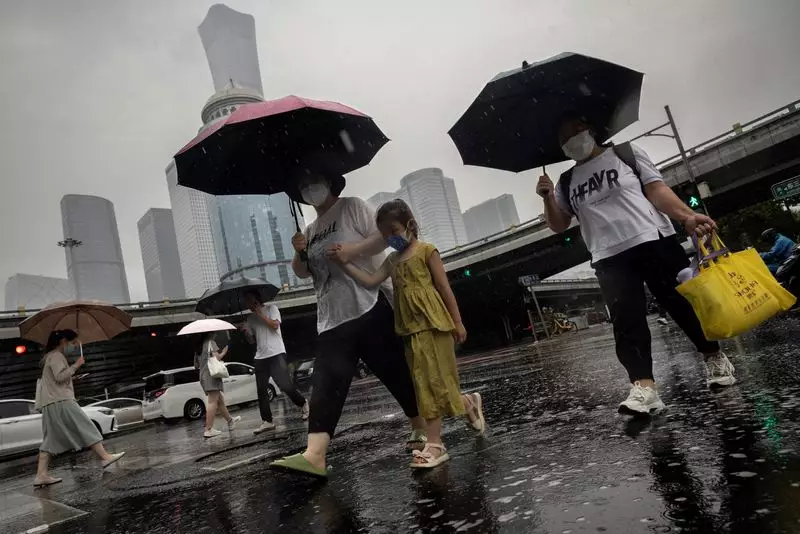The global economic landscape is witnessing a transition, particularly as many countries begin to celebrate the news of declining inflation rates. However, amidst these positive signals, China is grappling with an alarming trend that raises concerns of entrenched deflation. This phenomenon not only threatens China’s economic stability but also poses ramifications for the global economy, given China’s integral role in international trade.
Despite experiencing an uptick in consumer price inflation during August, there remains a pervasive anxiety over demand stagnation in China’s economy. Notably, consumer prices rose by 0.6% compared to the previous year—a modest increase largely driven by summer weather conditions that artificially inflated food prices. This superficial rise in inflation belies deeper, underlying issues in consumer demand. Core inflation, excluding volatile items like food and fuel, saw only a marginal increase of 0.3%, which represents a deceleration in growth to its most subdued level in over three years.
In contrast, producer prices experienced a significant decline, dropping 1.8% year-on-year, which marks a stark acceleration from the previous month’s reduction. Such trends are alarming, as deflation can spiral into a broader economic malaise characterized by reduced spending, layoffs, and waning consumer confidence. Historical comparisons, particularly to Japan’s “lost decades” following its economic bubble burst in the 1990s, underscore the potential long-term consequences of a deflationary cycle.
The cascading effects of deflation can create a vicious cycle that is challenging to escape. As consumer prices fall, businesses may curtail investments in anticipation of lower returns, leading to workforce reductions. Such layoffs can, in turn, diminish consumer spending power, resulting in further decreases in demand. Analysts at Morgan Stanley have emphasized that paycheck reductions could exacerbate the situation, initiating a cycle of economic contraction that is difficult to reverse.
China’s predicament becomes especially concerning when viewed through the lens of its ambitious growth target—aiming for a 5% real GDP increase in 2024. Yet, the persistence of deflationary pressures poses a severe threat to achieving this goal. This is compounded by the government’s attempts to stimulate the economy through investments in the industrial sector, which have not had the desired effect. While these initiatives were intended to increase consumer goods supply, they have inadvertently fueled deflation without sufficiently boosting demand.
In light of these economic challenges, discussions around potential fiscal support for critical sectors, particularly housing and social welfare programs, are gaining traction among lawmakers. Such measures could bolster spending in consumer markets, essential for revitalizing the economy. However, analysts remain skeptical about the likelihood of substantial changes in policy direction in the immediate future, indicating that the necessary adjustments may be slow to materialize.
Currently, China’s deflationary pressures are not isolated; they extend their influence globally, impacting inflation metrics in major economies, including the United States and the eurozone. The ramifications of China’s economic struggles may be felt far beyond its borders, presenting risks to global inflation trends, as central banks in these regions ponder reductions in interest rates.
Global Economic Interconnectedness
The ramifications of China’s economic conditions highlight the interconnectedness of global markets. As one of the primary engines of international trade, a deflationary cycle in China exerts disinflationary effects elsewhere, complicating monetary policy for economies that rely heavily on Chinese imports and exports. For example, a reduction in core inflation rates in the U.S. and Europe illustrates how trends within China can reverberate globally. As central banks consider interest rate adjustments, they must navigate the delicate balance between encouraging domestic growth and managing external inflationary pressures influenced by China’s economic state.
While many economies are finding relief in declining inflation, China stands at a precipice of deflation that threatens to impact both its financial health and the broader global economy. The historical lessons of economic stagnation serve as a stark reminder of the potential consequences. Stakeholders must remain vigilant as China navigates these choppy waters, recognizing that the solutions to its economic challenges will require decisive and effective policy interventions. The world will be watching closely, as the path forward for China will undoubtedly shape the contours of global economic stability in the years to come.

